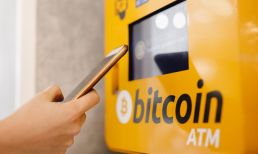When it comes to food ordering, robotic delivery is quickly evolving from fringe new technology to lived reality as restaurants and delivery services rush to find viable solutions to meet demand in spite of driver labor challenges. From drone drop-off to sidewalk rovers, trials of robotic delivery are live across a range of different United States cities.
The technology got a major push into the mainstream when Uber Eats kicked off two major trials of different kinds of autonomous delivery in Los Angeles last week, one in partnership with driverless vehicle technology company Motional and one with Serve Robotics, an autonomous sidewalk delivery company that spun off from delivery company Postmates (now owned by Uber) back in 2017.
Additional details: Uber Eats Launches Two Robotic Delivery Pilots as Restaurant Industry Struggles to Meet Demand
Ali Kashani, Serve’s co-founder and CEO, explained in an interview with PYMNTS how, even as these sorts of robotic deliveries become more widespread, it will take time to overcome resistance to the new technology.
“There’s ton of demand already. … It’s just a matter of time. It’s just patience,” he said. “You have to go through this process, put the robots out, take care of the integrations, go through the manufacturing of more robots. It takes time to engage regulators, engage customers. … There’s an education component, making sure people understand why this exists, why it needs to exist.”
By the Numbers
Advertisement: Scroll to Continue
Indeed, the demand is there. Research from the March/April edition of PYMNTS’ Digital Divide series, “The Digital Divide: Regional Variations in U.S. Food Ordering Trends and Digital Adoption, created in collaboration with Paytronix, which drew from a survey of more than 2,500 U.S. adults who regularly purchase food from restaurants, found that about one in three restaurant customers order from delivery aggregators each month.
See also: New Research Shows That Regional Dining Quirks Matter in Tailoring Restaurant Offers
Additionally, more consumers would be ordering from aggregators if it were not for the extra costs associated with the channel such as the fee for drivers’ labor and the added tip. This additional spending discourages many restaurant customers, according to data from PYMNTS’ Restaurant Friction Index, created collaboration with Paytronix, which drew from a survey of a census-balanced panel of over 2,100 United States adults.
Related news: New Data Show Digital Loyalty Programs Are Key Differentiator for Top-Performing Restaurants
The study found that, of the 58% of consumers who do not order via aggregator, 41% steer clear because they are unwilling to pay the delivery or service fee, a greater share than said the same of any other deterrent.
Both delivery services and restaurants, major brands and independents alike, are seeking out automated solutions to help meet this demand.
In fact, research from the January issue of PYMNTS’ Main Street Merchant Index™ (MSI), “Main Street Index: Optimism Amid Inflation Edition,” created in collaboration with Melio, which drew from a survey of 765 Main Street U.S. business owners conducted in the late fall, found that 29% of businesses in the food, entertainment and accommodation segment reported that they are “very” or “extremely” likely to invest in automation/robotization of tasks that currently require manual labor. Plus, a greater share of businesses in the segment reported an interest in these technologies than in any other segment.
Read more: Two-Thirds Of US Main Street Businesses Show Optimism Despite Inflation, Economic Uncertainty
Separating the Wheat From the Chaff
Noting this demand, robotics companies are flooding into the space promising automated solutions.
“The key is … going out there and identifying what’s noise and what’s signal,” Kashani said. “Obviously, in any segment of technology, we have hype cycles where some things are over-promised and then over time, we figure out what the reality is.”
He cited the example of fully self-driving vehicles, arguing that, while some have been making big claims about the potential of the technology for years, only now is it becoming a viable possibility. As such, he contends that the dynamic has flipped, where now those who have undervalued the technology “might actually be on the losing side,” while those who are seriously exploring its possibilities are “going to be the winners.”
You may also like: Restaurants Turn to Robotics to Fulfill Delivery Demand
Full Autonomy
Now, as these players compete for restaurant and delivery service customers, some are offering devices piloted by remote drivers, while others are offering fully driverless options. Those operating in the latter space, including Serve, are offering level 4 autonomy, where vehicles can operate themselves under some conditions but not others.
“This idea that you can just have someone remotely drive a robot, it just doesn’t work. It’s not safe. It’s not economical,” Kashani argues, “but the solution has been presented. We now have what is needed to make [level 4 autonomy] commercially viable at scale, and that’s exactly what’s happening now.”




